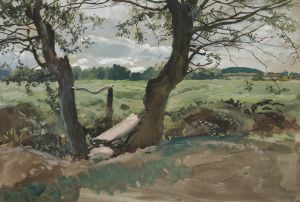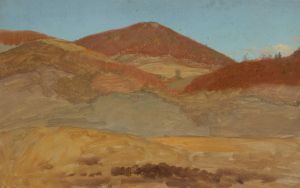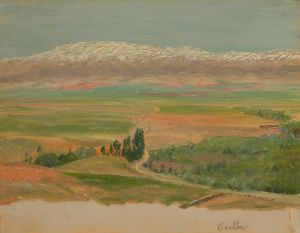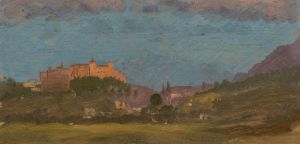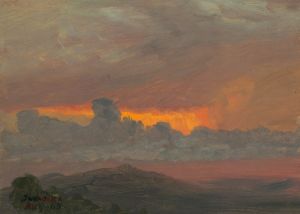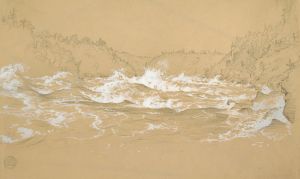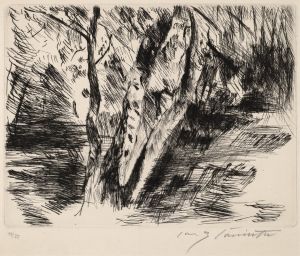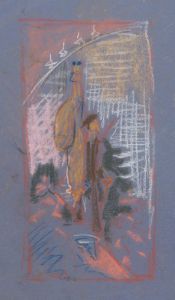
Mount Katahdin from Lake Millinocket
A hand-painted replica of Frederic Edwin Church’s masterpiece Mount Katahdin from Lake Millinocket, meticulously crafted by professional artists to capture the true essence of the original. Each piece is created with museum-quality canvas and rare mineral pigments, carefully painted by experienced artists with delicate brushstrokes and rich, layered colors to perfectly recreate the texture of the original artwork. Unlike machine-printed reproductions, this hand-painted version brings the painting to life, infused with the artist’s emotions and skill in every stroke. Whether for personal collection or home decoration, it instantly elevates the artistic atmosphere of any space.
"Mount Katahdin from Lake Millinocket" is a painting by the renowned American landscape artist Frederic Edwin Church. Church, a central figure in the Hudson River School, is celebrated for his grand and detailed landscapes that often depict the sublime beauty of the American wilderness. This particular work captures the majestic view of Mount Katahdin, the highest peak in the state of Maine, as seen from Lake Millinocket.
Frederic Edwin Church was born in 1826 in Hartford, Connecticut, and became one of the most prominent landscape painters of the 19th century. He studied under Thomas Cole, the founder of the Hudson River School, and quickly developed his own distinctive style characterized by meticulous attention to detail and dramatic use of light and color. Church's works often reflect his fascination with natural phenomena and his desire to convey the grandeur of the natural world.
"Mount Katahdin from Lake Millinocket" exemplifies Church's ability to capture the essence of a landscape with precision and emotional depth. The painting portrays Mount Katahdin, a significant landmark in Maine, known for its rugged beauty and as the northern terminus of the Appalachian Trail. Church's depiction of the mountain is both realistic and idealized, showcasing the interplay of light and shadow on its slopes and the serene waters of Lake Millinocket in the foreground.
The composition of the painting is carefully balanced, with the mountain dominating the background and the lake providing a tranquil counterpoint in the foreground. Church's use of light is particularly noteworthy, as he captures the subtle shifts in color and tone that occur as sunlight interacts with the landscape. This attention to detail not only highlights the physical features of the scene but also evokes a sense of awe and reverence for the natural world.
Church's work is often associated with the concept of the sublime, a term used in art and philosophy to describe the overwhelming beauty and power of nature. "Mount Katahdin from Lake Millinocket" embodies this idea, as it invites viewers to contemplate the vastness and majesty of the American wilderness. The painting reflects the 19th-century American cultural movement that celebrated the nation's natural landscapes as symbols of national identity and divine creation.
Throughout his career, Church traveled extensively, seeking inspiration from diverse landscapes both in the United States and abroad. His journeys to South America, the Arctic, and the Middle East, among other places, informed his artistic vision and contributed to his reputation as a painter of international acclaim. Despite his travels, Church remained deeply connected to the American landscape, and works like "Mount Katahdin from Lake Millinocket" demonstrate his enduring appreciation for the natural beauty of his homeland.
Today, Frederic Edwin Church is remembered as one of America's greatest landscape painters, and his works continue to be celebrated for their technical skill and emotional resonance. "Mount Katahdin from Lake Millinocket" is a testament to Church's ability to capture the spirit of the American wilderness and remains an important piece in the study of 19th-century American art.





